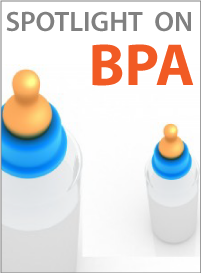New York State: 85 chemicals to avoid
 Wednesday, January 26, 2011 at 01:40PM
Wednesday, January 26, 2011 at 01:40PM
 Source: ny.govThis is a great initiative, but it will be interesting to see if state agencies can "avoid" cadmium and lead (and others) which are ubiquitious in computers and other electronics.
Source: ny.govThis is a great initiative, but it will be interesting to see if state agencies can "avoid" cadmium and lead (and others) which are ubiquitious in computers and other electronics.
When someone with $8 billion a year in purchasing power tells the world what they don’t want, marketers and manufacturers pay attention.
That’s what’s happened recently in New York, where state agencies operate 16,000 facilities and a fleet of 17,000 vehicles and generate more than 800,000 tons of waste a year. Those agencies are now working with an official policy that urges them, for the sake of public health, to avoid products, equipment and other items containing any of 85 toxic chemicals whenever safer, cost-effective alternatives are available. The goal is to minimize New Yorkers’ exposure to these chemicals as much as possible and prevent them from ending up in the state’s landfills.
The unprecedented step is a victory first and foremost for the people of the New York, but potentially also for other states that may be inspired to follow the Empire State’s example. If they do, New York’s “Chemical Avoidance List” gives them a huge head start in developing their own policies.
Two days before the end of 2010, the Interagency Committee on Sustainability and Green Procurement approved the policy directing all state agencies to consider avoiding the 85 toxic chemicals. The list consists of known and probable human carcinogens identified by the U.S. Environmental Protection Agency and the National Toxicology Program as well as substances that accumulate in the human body and don’t readily break down in the environment. They are known as persistent, bioaccumulative and toxic chemicals, or PBTs for short....
Read the full story by Olga Naidenko at EWG.org
List of Chemicals for Consideration in Green Procurement
 Chemicals,
Chemicals,  Green Chemistry,
Green Chemistry,  New York
New York  Policy
Policy 

